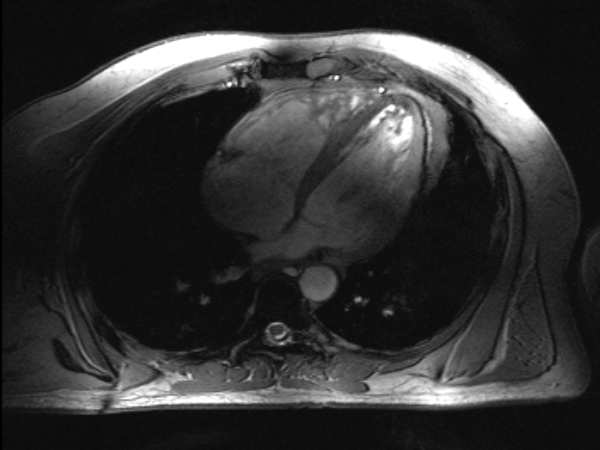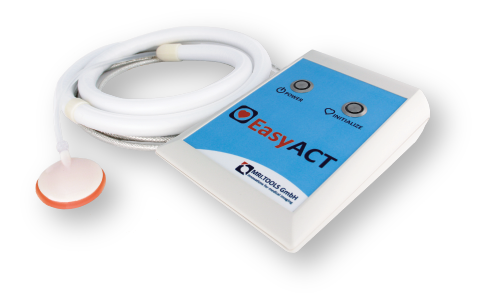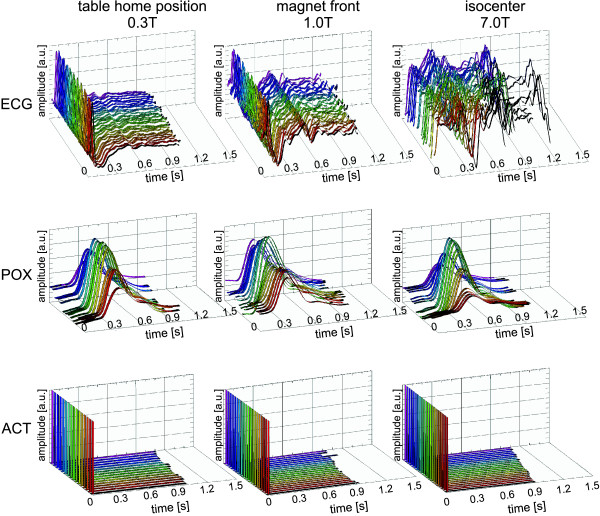

-
“EasyACT solves an important problem within one’s daily research routine. We recommend it further!”
Dr.rer.nat. Martin Kanowski (Uni Magdeburg)
-
"ACT's trigger reliability and fidelity are superior to that of ECG and POX"
Dr.-Ing. Tobias Frauenrath (et al.)
-
“I appreciate the adaptive nature of the device.”
Valeriy Tkachenko, Ph.D. cand.
-
"Its intrinsic insensitivity to interference from electromagnetic fields renders it suitable for clinical imaging because of its excellent trigger reliability, even at 7.0 Tesla"
Prof. Dr. Sebastian Kozerke (et al.)
-
“EasyACT has the potential to become a strong and convenient alternative to the conventional methods.”
Dr. Florian von Knobelsdorff-Brenkenhoff
-
"UHF CMR will help to open the door to new approaches for basic science and clinical research"
Dr. Daniel Sodickson (et al.)
EasyACT – a triggering/gating device
The EasyACT will greatly ease your workflow for triggering and gating of MRI and other biomedical imaging techniques, and can be employed at any field strength. It is based on non-invasive detection of acoustic signals induced by cardiac activity and surprises one with the ease of its use and reliability. The EasyACT‘s efficacy has been proven in several clinical studies to date. It is MR safe and in full compliance with regulations for medical devices as well as having been CE certified.

MRI scan of a heart with cardiac gating

Features
![]() Free from interferences with electromagnetic fields
Free from interferences with electromagnetic fields
![]() Free from artifacts caused by ECG electrodes and wires
Free from artifacts caused by ECG electrodes and wires
![]() Suitable for all MRI, CT and PET scanners
Suitable for all MRI, CT and PET scanners
![]() Supports prospective and retrospective triggering/gating
Supports prospective and retrospective triggering/gating
![]() Signal originates directly from the heart
Signal originates directly from the heart
![]() Excellent patient comfort and no risk of patient burns
Excellent patient comfort and no risk of patient burns
![]() Ease of use and simplicity of patient preparation
Ease of use and simplicity of patient preparation
![]() Plug`n play installation and shorter preparation time
Plug`n play installation and shorter preparation time
Reference medical journals
From research to clinical use
Cardiac chamber quantification using magnetic resonance imaging at 7 Tesla--a pilot study
von Knobelsdorff-Brenkenhoff F. et al. – Eur Radiol. (2010)
Toward cardiovascular MRI at 7 T: clinical needs, technical solutions and research promises
Niendorf T. et al. – Eur Radiol. (2010)
Comparison of left ventricular function assessment using phonocardiogram- and electrocardiogram-triggered 2D SSFP CINE MR imaging at 1.5 T and 3.0 T
Becker M. et al. – Eur Radiol. (2010)
Acoustic cardiac triggering: a practical solution for synchronization and gating of cardiovascular magnetic resonance at 7 Tesla
Frauenrath T. et al. – J Cardiovasc Magn Reson. (2010)
Feasibility of cardiac gating free of interference with electro-magnetic fields at 1.5 Tesla, 3.0 Tesla and 7.0 Tesla using an MR-stethoscope
Frauenrath T. et al. – Invest. Radiol. (2009)

